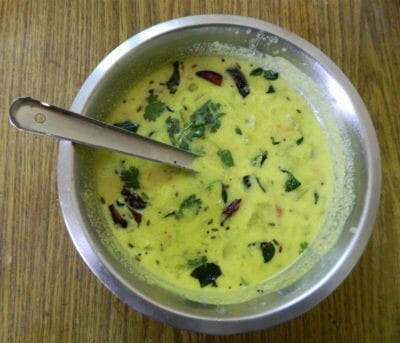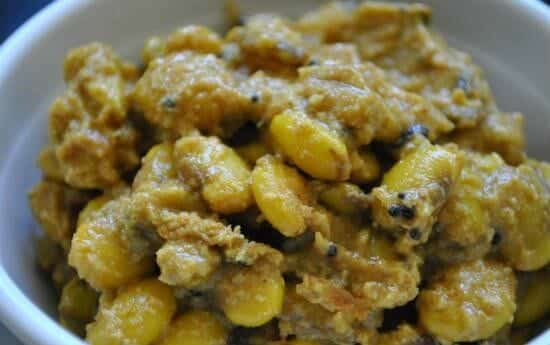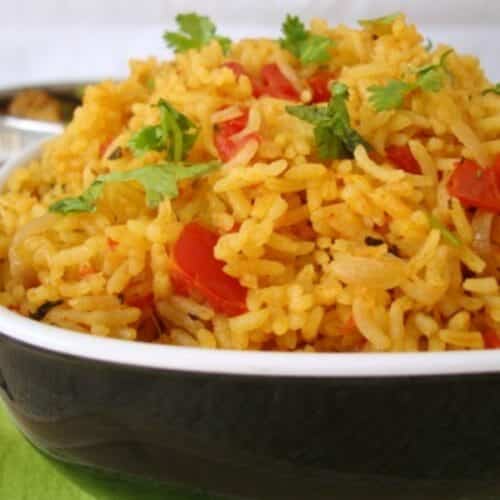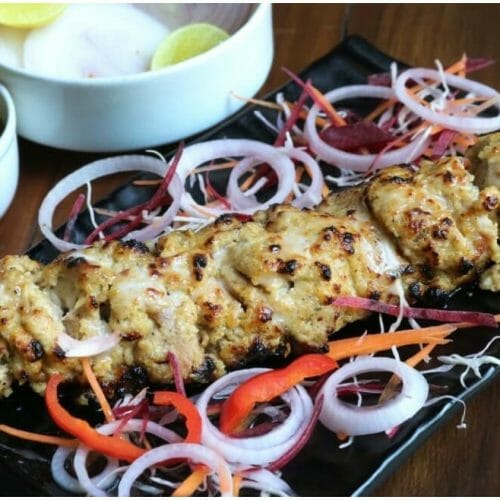Food defines culture. It tells the story of a place, its people, and its history. For Greece, from azure waters, white sand beaches, and ancient monuments to the vibrant Greek Diaspora, one element unites them all – Food. The culinary tradition of Greece has been passed down from generation to generation, evolving and trending over time, offering an array of diverse flavours, textures, and ingredients that are the essence of what we know as Greek cuisine today. Enriched by the country’s position at the crossroads of East and West, the regional intricacies bring together Ottoman, Italian, Balkan, and Middle Eastern influences to create dishes that are deeply embedded in Greek ethos. If you are planning a trip or just want to try cooking up a storm at home, here are ten must-try Greek dishes…
1. Moussaka – The crown jewel of Greek comfort food
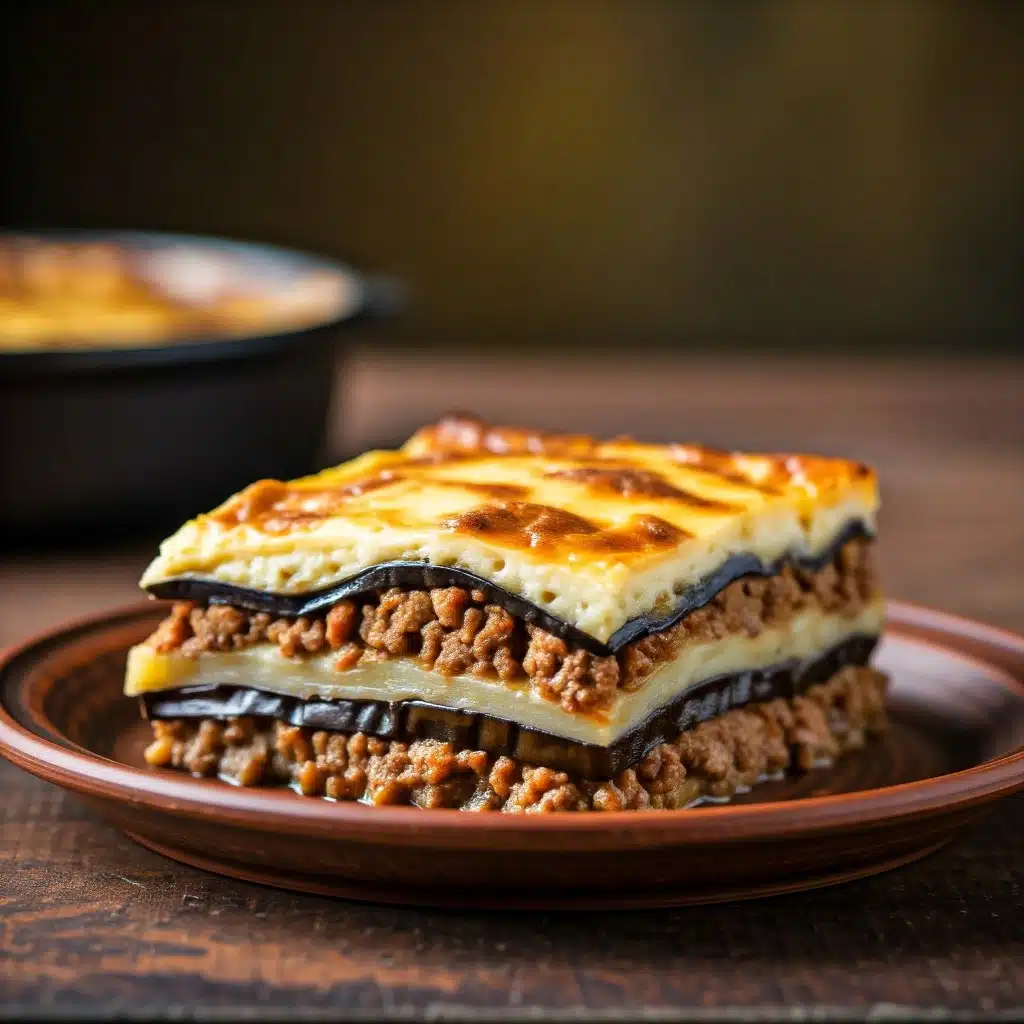
Moussaka
Moussaka is a traditional Greek casserole made with layers of eggplant, minced meat (often lamb or beef), and béchamel sauce, baked until golden and bubbly. This hearty dish is flavoured with Mediterranean spices and herbs, making it a quintessential comfort food.
How to prepare?
- Preheat oven to 375°F (190°C).
- Brush eggplant slices with olive oil, season with salt, and roast or pan-fry until tender.
- In a skillet, sauté onion and garlic in olive oil, then add minced meat, cooking until browned.
- Stir in tomatoes, tomato paste, cinnamon, allspice, salt, and pepper. Simmer for 20 minutes.
- Prepare béchamel sauce: Melt butter, whisk in flour, and cook for 2 minutes. Gradually add milk, whisking constantly. Once thickened, remove from heat, whisk in egg yolks, nutmeg, and salt.
- Assemble: Layer eggplants, meat sauce, and béchamel in a baking dish. Sprinkle Parmesan on top.
- Bake for 40-45 minutes or until golden. Let cool for 10 minutes before serving.
2. Souvlaki – The grilled glory of Greece
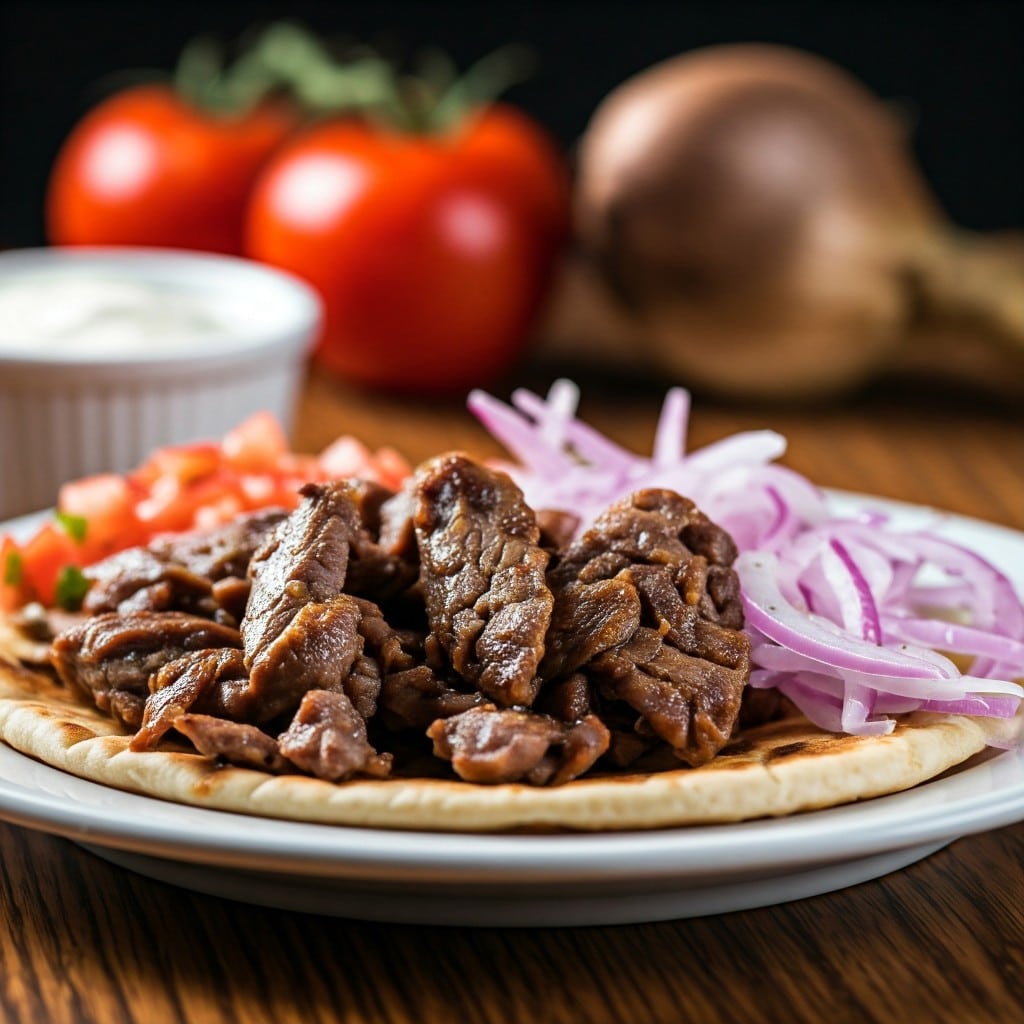
souvlaki
Souvlaki is a popular Greek street food consisting of marinated meat skewered and grilled. Often served with pita bread, tzatziki, and salad, it’s a versatile and flavourful dish.
How to prepare?
- Combine olive oil, lemon juice, garlic, oregano, salt, and pepper to create the marinade.
- Toss meat cubes in the marinade and refrigerate for at least 2 hours or overnight.
- Thread meat onto skewers.
- Grill on medium heat for 10-15 minutes, turning occasionally, until cooked through.
- Serve with pita, tzatziki, and fresh vegetables.
3. Dolmades – Heritage wrapped in grape leaves
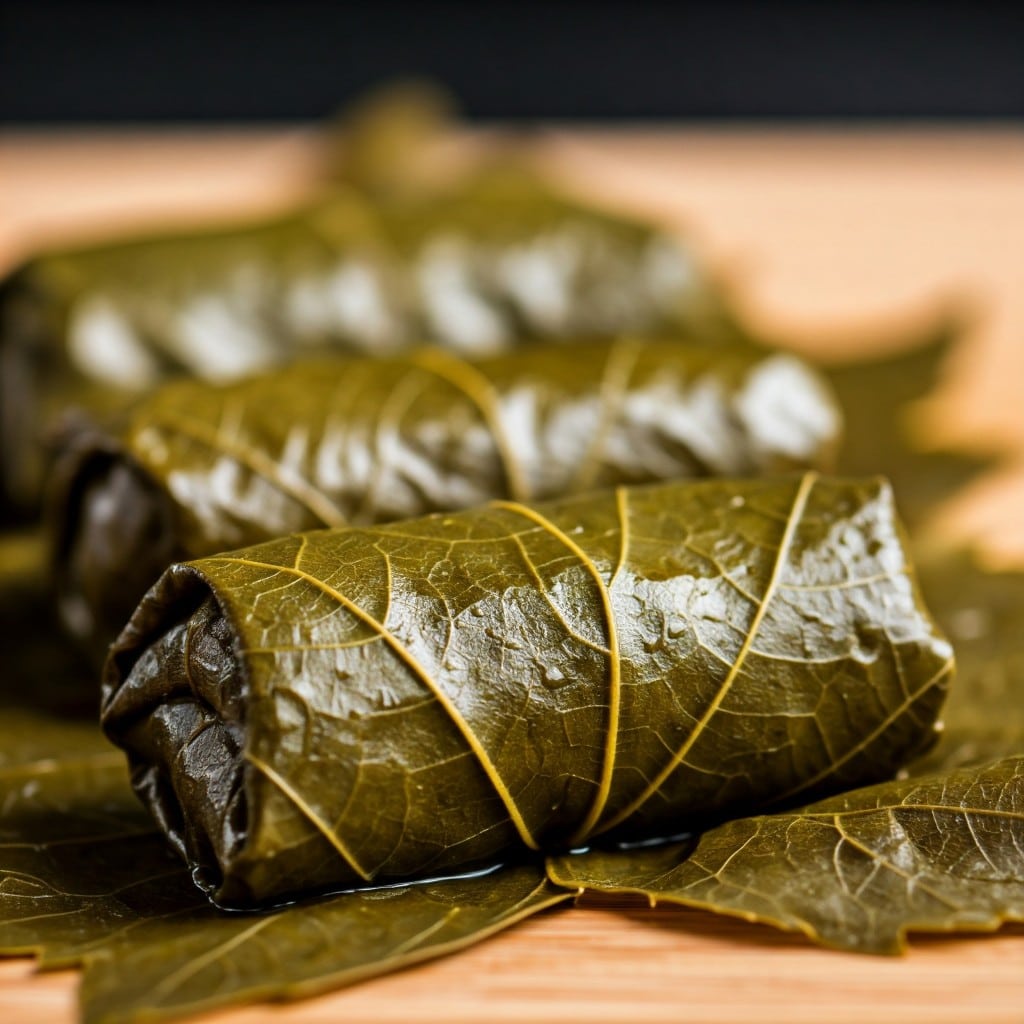
Dolmades
Dolmades are grape leaves stuffed with a mixture of rice, herbs, and sometimes meat. They are a staple of Greek mezze platters and are typically served with lemon wedges.
How to prepare?
- Sauté onion in olive oil until translucent. Add rice, herbs, salt, and pepper, cooking for 2 minutes.
- Add 1 cup of water and simmer until rice is half-cooked. Cool the mixture.
- Lay a grape leaf flat, place a spoonful of filling near the stem end, fold in the sides, and roll tightly.
- Arrange dolmades seam-side down in a pot. Add enough cold water or broth to cover them.
- Simmer on low heat for 45-60 minutes. Drizzle with lemon juice before serving.
4. Spanakopita – The flaky wonder of Greek cuisine
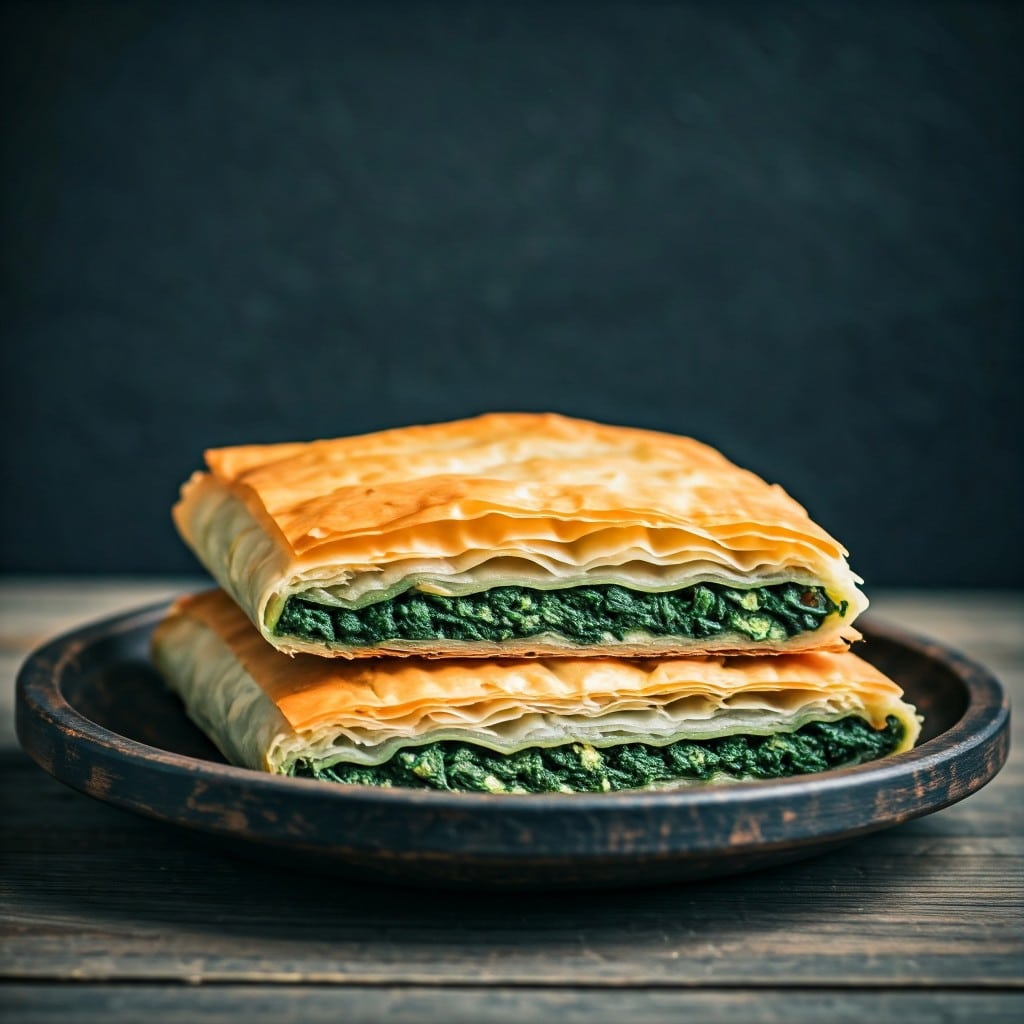
Spanakopita
Spanakopita is a flaky Greek pie filled with spinach, feta cheese, and herbs encased in crispy layers of phyllo dough. It’s a versatile dish served as a snack, appetiser, or main course.
How to prepare?
- Sauté spinach until wilted. Drain excess liquid and mix with feta, dill, green onions, eggs, salt, and pepper.
- Brush a baking dish with olive oil. Layer phyllo sheets, brushing each with oil until half the stack is used.
- Spread the spinach filling evenly and cover with remaining phyllo sheets, brushing each layer.
- Bake at 375°F (190°C) for 40-45 minutes or until golden. Cool slightly before slicing.
5. Gyro – The rotisserie delight of Greece
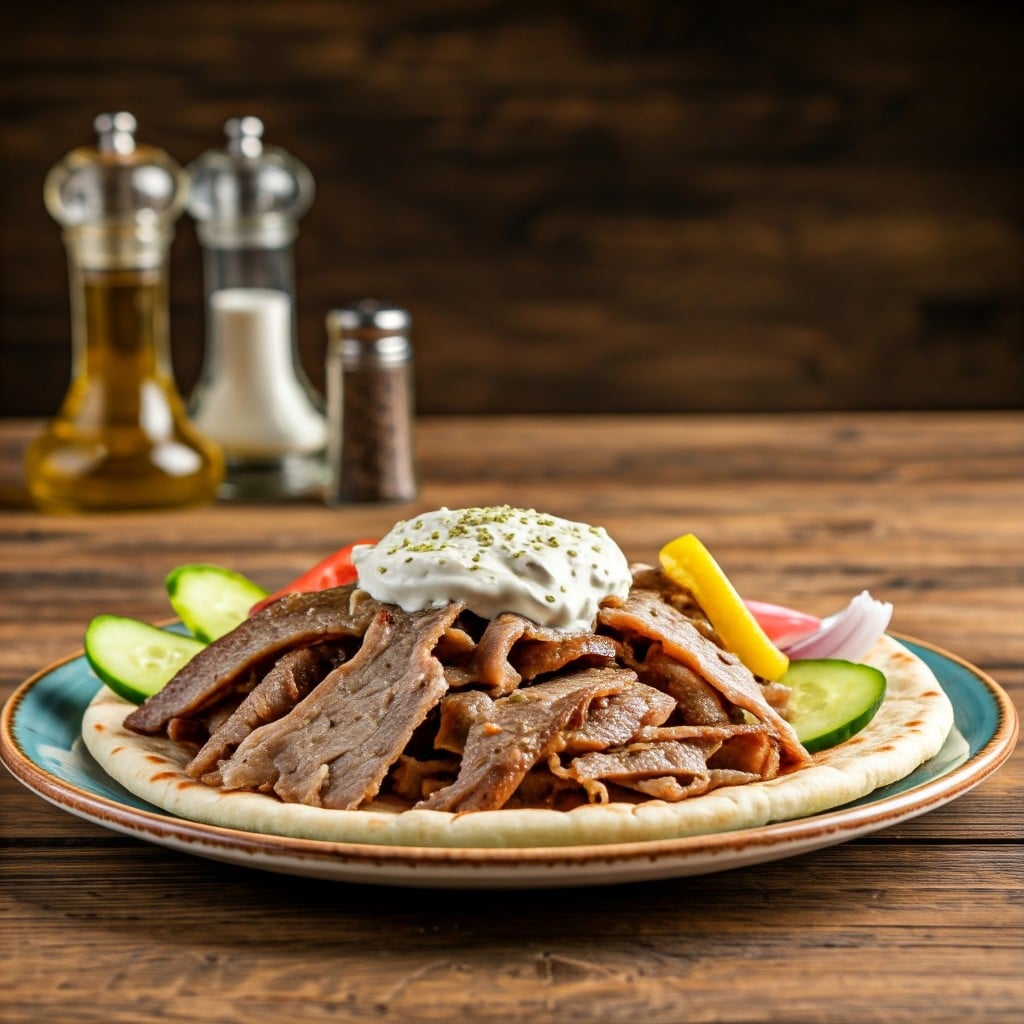
Gyro
Gyro is a classic Greek dish featuring spiced meat (typically lamb, pork, or chicken) roasted on a vertical rotisserie, sliced thin, and served in pita with vegetables and tzatziki sauce.
How to prepare?
- Marinate meat with olive oil, garlic, oregano, cumin, paprika, salt, and pepper for at least 2 hours.
- Roast in the oven at 400°F (200°C) or grill until cooked. Thinly slice.
- Assemble gyros by layering meat, vegetables, and tzatziki in pita bread.
- Wrap and serve warm.
6. Greek Salad (Horiatiki) – The farmer’s feast of the Mediterranean
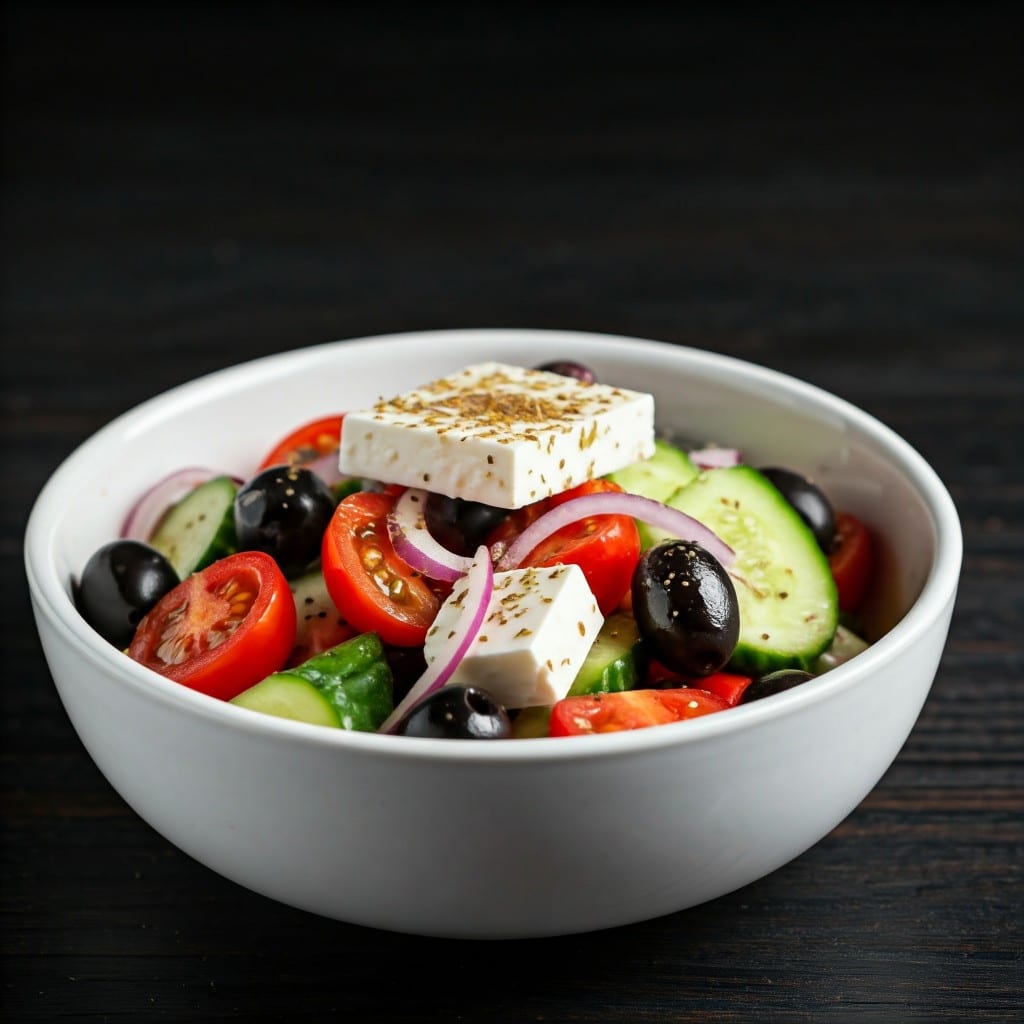
Greek Salad
Greek Salad (Horiatiki) is a refreshing mix of tomatoes, cucumbers, onions, olives, and feta cheese dressed with olive oil and oregano. It’s a simple yet flavourful representation of Greek cuisine.
How to prepare?
- In a bowl, combine tomatoes, cucumber, onion, bell pepper, and olives.
- Place the feta block on top.
- Drizzle with olive oil, sprinkle with oregano, and season with salt.
- Serve fresh with crusty bread.
7. Taramasalata – The creamy treasure of the Aegean
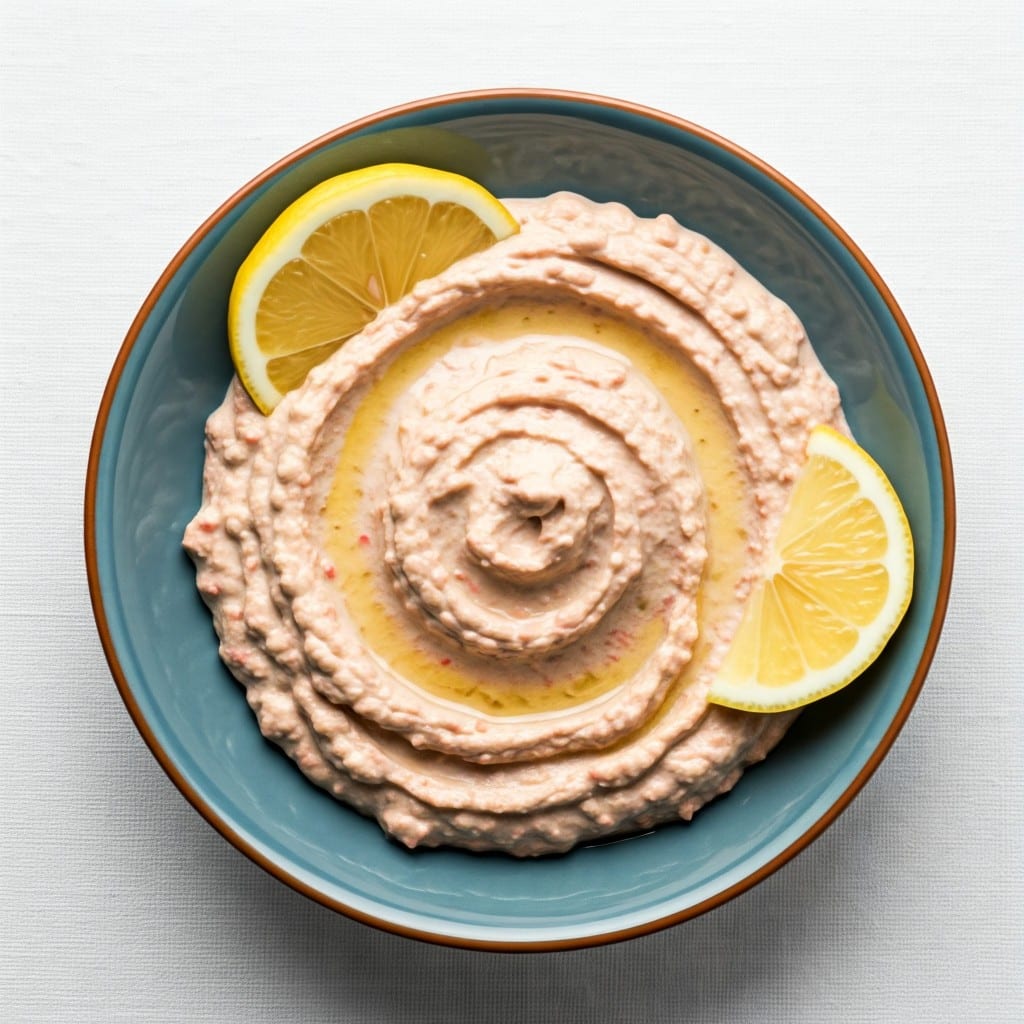
Taramasalata
Taramasalata is a creamy dip made from taramas (fish roe), blended with olive oil, lemon juice, and breadcrumbs or potatoes. It’s a savoury treat often served with bread or vegetable sticks.
How to prepare?
- Blend fish roe, bread, and grated onion in a food processor until smooth.
- Slowly drizzle in olive oil while blending to create a creamy texture.
- Add lemon juice and adjust the seasoning.
- Serve chilled with pita or vegetables.
8. Fava – Santorini’s golden spread
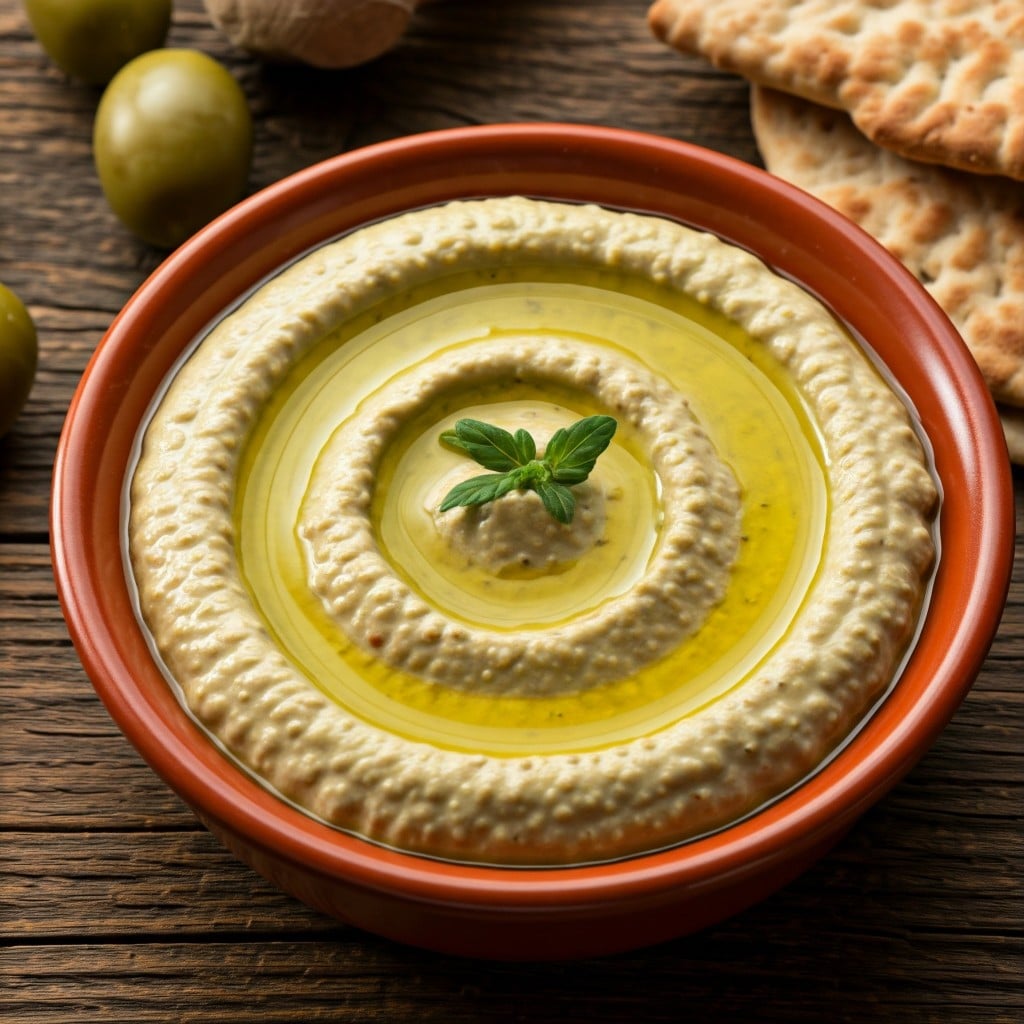
Fava
Fava is a smooth and creamy Greek dip made from yellow split peas, olive oil, and lemon. It’s a hearty and protein-packed dish, typically served with bread or vegetables.
How to prepare?
- Rinse split peas and boil with water, onion, and garlic. Simmer until peas are soft (about 30-40 minutes).
- Blend the mixture until smooth, adding olive oil and lemon juice.
- Season with salt and pepper. Serve warm or cold with olive oil drizzle.
9. Gemista – Grilled perfection from the Greek hearth
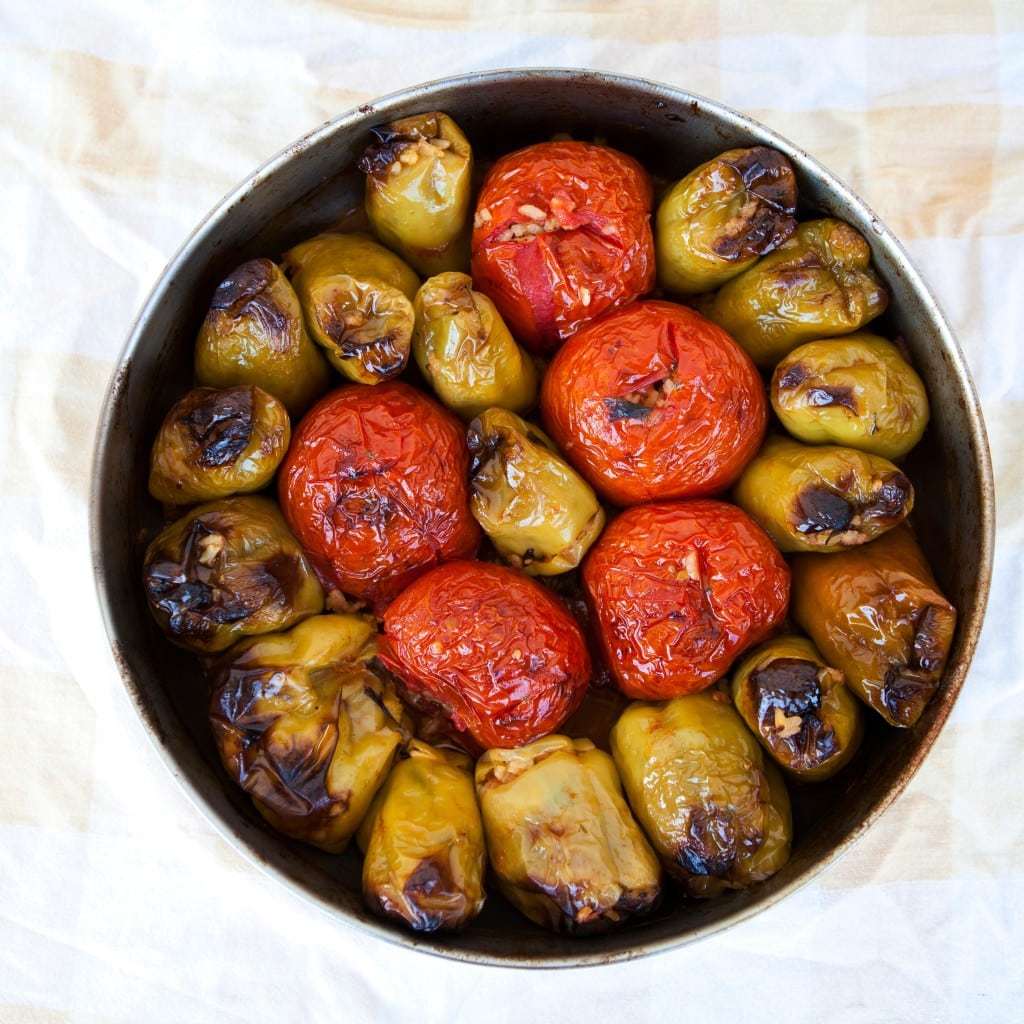
Gemista
Gemista (or Yemista) are vegetables like tomatoes, peppers, or zucchini stuffed with a mixture of rice, herbs, and sometimes minced meat baked in a tomato-based sauce. It’s a quintessential Greek comfort food.
How to prepare?
- Preheat oven to 375°F (190°C).
- Sauté onion and garlic in olive oil. Add rice, herbs, and half the tomato purée. Cook for 5 minutes.
- Stuff vegetables with the rice mixture and place in a baking dish.
- Pour the remaining tomato purée over and around the stuffed vegetables.
- Cover and bake for 45-50 minutes, then uncover and bake for another 10 minutes.
10. Baklava – The sweet legacy of Greek indulgence

Baklava
Baklava is a rich, sweet dessert made of layers of flaky phyllo pastry filled with nuts and sweetened with honey or syrup. It’s a beloved treat in Greek and Middle Eastern cuisines.
How to prepare?
- Preheat oven to 350°F (175°C).
- Mix chopped nuts with cinnamon.
- Brush a baking dish with butter and layer eight sheets of phyllo, brushing each with butter.
- Spread a thin layer of nuts, then add two phyllo sheets. Repeat until all ingredients are used, finishing with eight phyllo sheets.
- Cut into diamond or square shapes. Bake for 35-40 minutes until golden.
- Prepare syrup by boiling sugar, water, honey, and lemon juice for 10 minutes.
- Pour hot syrup over cooled baklava. Let soak before serving.
Conclusion
In essence, Greek Cuisine captures the spirit of ancient Greece and its people. The diet of Greece, whether from Northern Greece or from the Island of Syros, carries within its dishes the stories of its past. From the tangy Tzatziki and the hearty Moussaka to the sweet allure of Baklava, each Greek dish brings to life the cultural heritage and the unique gastronomical journey of the country. It makes use of the freshest and the finest ingredients paired with century-old recipes and cooking techniques passed down many generations. So, whether you plan on visiting the city of Athens or simply wish to recreate its culinary majesty at home, we hope this guide to 10 must-try Greek dishes has been a helpful waypoint on your epicurean journey. For more such Rajasthani recipes, check out Awesome Cuisine.
Frequently Asked Questions
What is the most popular food in Greece?
One of the most universally popular foods in Greece is the humble Souvlaki. This delicious fast food, known for its freshness and aromas, features fresh meat grilled on a skewer and often served wrapped in warm pita bread with tzatziki sauce. It symbolises the essence of Greek street food culture from ancient times and takes you on an incredible gastronomic journey.
What are some common ingredients used in Greek dishes?
Common ingredients in the Greek diet include olive oil, fresh or dried herbs (like oregano and dill), garlic, lemon juice, various vegetables, fish like mullet, and dairy products like feta cheese and yoghurt. Grains have always featured in ancient Greek cuisine from the time of the Ottoman Empire, with bread and rice being staple food items.
Is Greek cuisine healthy?
Yes, Greek recipes are indeed healthy when compared to other cuisines like that from the Middle East or Asian. Being the foundation of the Mediterranean diet, it emphasises fresh fruits and vegetables, lean proteins, seafood like squid and octopus, whole grains, and healthy fats such as olive oil. This balance of nutrients contributes to overall health and longevity.
How do Greek food traditions differ from other Mediterranean cuisines?
Greek cuisine stands out in the Mediterranean because of its use of fresh, locally sourced ingredients and age-old cooking methods. It’s simpler, fresher, and less saucy compared to Italian cuisine or French cuisine. The umami flavour in Greek dishes comes from ingredients like olive oil, lemon, garlic, and feta.







